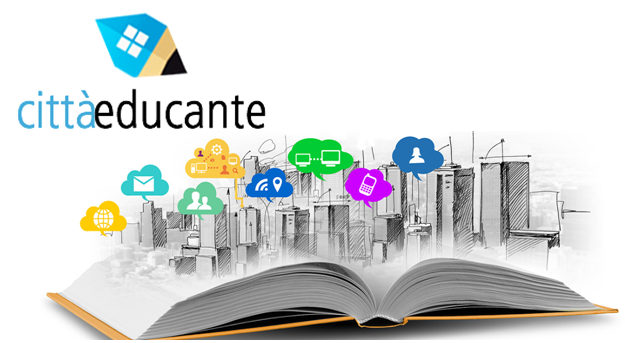Educating City
The CRIT contributes to the MIUR Educating City project
The “Educating City” project (http://www.cittaeducante.it), funded by the Ministry of Education, University and Research (MIUR) in the context of the activities of the national technological cluster on “Smart Cities and Communities”, intends to define new educational approaches, aimed at preparing a new generation of “smart” citizens, in other words more active, aware and inclusive; in the project, the “educating city” serves as a laboratory of educational activities and is able to promote new connections between school, territory and society.
The other partners in addition to RAI include: the project leader is Almaviva, the National Research Council (CNR), the University of Modena and Reggio Emilia (UNIMORE), the University of Trento and the Reggio Children Foundation (International Center for the defense and promotion of the rights and potential of children and girls).

The project identifies three fundamental thematic areas:
- School / Education: to offer the school of every level of education a set of knowledge, strategies and technological applications that innovate the educational approach. A method that helps to be active, welcoming and aware citizens. Aimed at children and adults, as subjects of life-long learning, in the processes of aging and in welcoming diversity.
- Society: developing new connections between schools, companies and the territory.
- Technology: development of new platforms, services and ICT applications thanks to specific research activities in the fields of cloud computing, collaborative sourcing, social networks, automatic analysis of texts, video and 3D data, big data analysis, interfaces natural and interactive, robotic, sensory and pervasive aids, automatic learning and search systems.
The RAI contribution
RAI, based on the various skills of the departments involved (Teche, RAI Culture, ICT, Planning and Quality, and CRIT), deals with providing audiovisual material, technology and support in the definition of architectures. RAI audiovisual content is addressed both to the development and training of machine learning software and to the provision of users of the demonstration platform of the project, in compliance with the availability of rights.
The contribution of the Research and Technological Innovation Center
The Research Center conducts selection and annotation of audiovisual material aimed at training machine learning engines as part of the automatic knowledge extraction activities envisaged by the project.
In order to achieve an automatic categorization of audiovisual clips with criteria applicable to the educational field, we referred to the classification of the Disciplinary Scientific Sectors (SSD) of the Ministry of Education, University and Research (MIUR) and set up a system of manual annotation with which a corpus of training of the classifier has been realized.
This taxonomy (https://it.wikipedia.org/wiki/Settore_scientifico-disciplinare) is hierarchically on four levels, so there are 14 areas, 88 macro-sectors, 188 sectors and 367 scientific-disciplinary sectors. The classifier created is particularly oriented to scientific-technological topics, as it has been particularly drawn from the archive of TG Leonardo, but it can be extended to cover equally all areas of the SSD classification.
The taxonomy has been implemented according to the modern techniques of the semantic Web, thus allowing the interoperability of the classification system developed with existing systems. The RDF / XML file describing the taxonomy will soon be available at http://purl.oclc.org/NET/it-ssd_skos.owl.
A further activity concerns a very similar process aimed at the recognition and automatic categorization of named entities or proper names of places, people, organizations, starting from the text accompanying the audiovisual content, including that automatically obtained from the analysis of the audio with speech-to-text techniques.